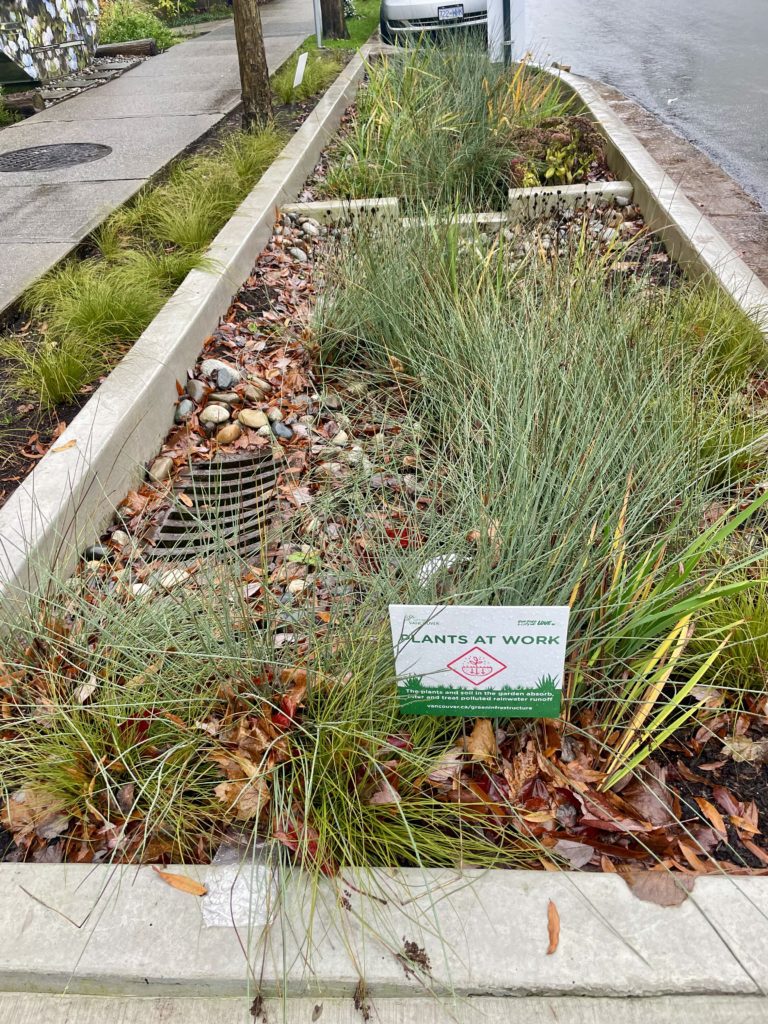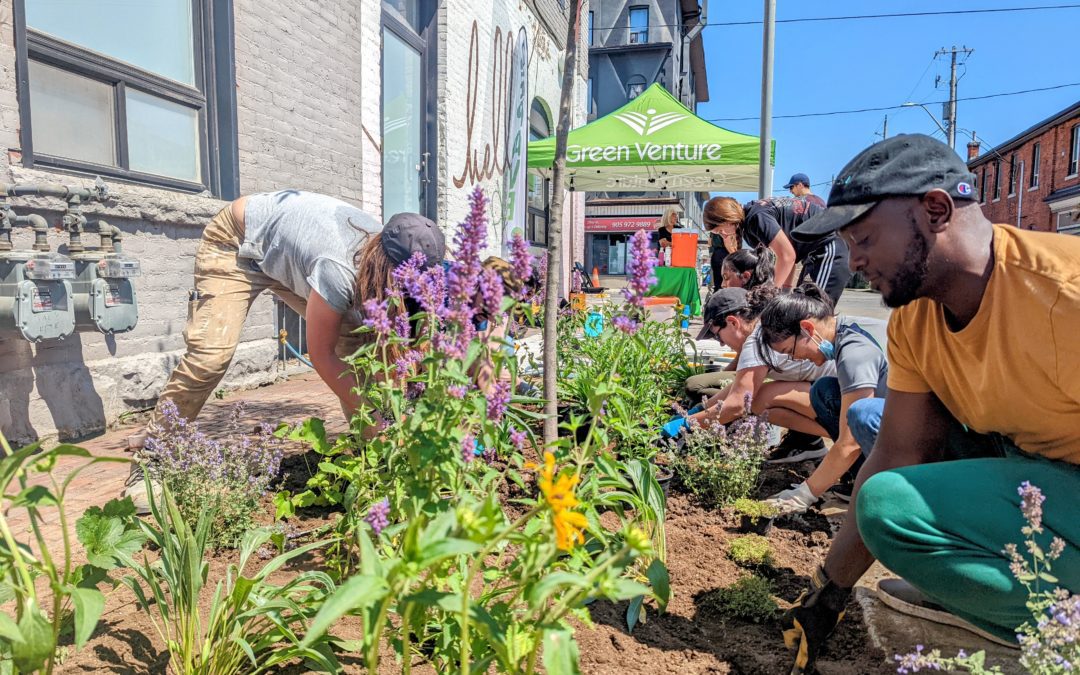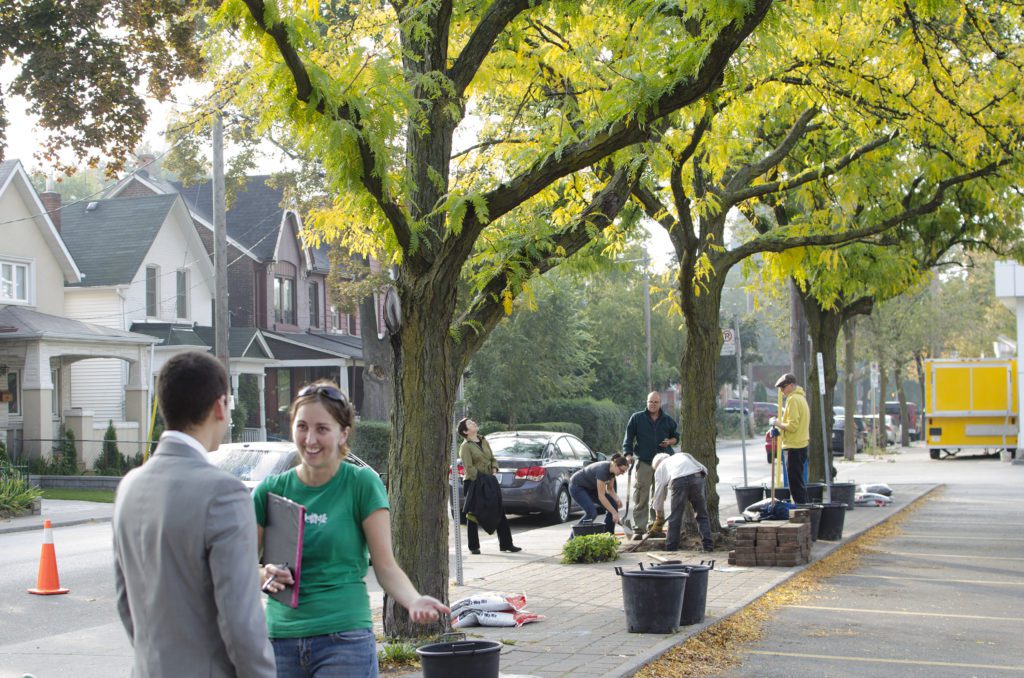Finding effective ways to manage stormwater in an economically and environmentally sustainable manner is an ongoing concern in municipalities across Canada.
Rapid and increasing urbanization since the early 20th century has led to increased water demands for human populations, while large areas of natural landscapes have been transformed into paved and impervious surfaces.
These two major changes have had cascading effects on local and regional water systems. Human life and infrastructure are under threat from increasing floods and environmental health is severely affected due to these changes to local water quality and water quantity.
Are conventional stormwater systems to be blamed?
The current strategy to manage stormwater runoff is to drain excess rainwater into local streams and rivers. This mode of stormwater management has been practiced for flood control purposes since the 1940s.
Stormwater may be transported either by combined sewers (together with domestic and industrial wastewaters) to local treatment facilities, or by separate sewers flowing directly into the nearest stream or lake. These systems of pipes and drains are often referred to as “grey infrastructure” and they are a real problem!
Directing stormwater from hard surfaces very quickly to local waterways reduces opportunities for natural drainage to groundwater, soil, and evaporation. This dependency on storm drains significantly increases the overall scale, frequency, and volume of stormwater runoff. Even low intensity storms create high volumes of polluted stormwater due to the complete interruption of natural opportunities for drainage!
Furthermore, there is a major reduction in summer and winter groundwater because of reduced natural drainage, which make drought conditions worse.
These traditional systems, in combination with rapid land-use change due to urbanization, create negative impacts on urban stream water quality and increase storm volumes.
Simply put, streams and rivers cannot handle the speed at which stormwater is being directed into them and the pollutants cause harm to local aquatic life. As a result, these conventional stormwater systems have the opposite effect of their intent — they increase urban flood risks.
How to address increasing flood risks
Flood risks are also constantly increasing due to ongoing urban expansion and increased storm intensity because of climate change. Many of the existing conventional pipe and drain systems in communities across Canada cannot handle the quantity of stormwater runoff they are now facing during routine storm events.
Decades of underinvestment in stormwater infrastructure, and the costly nature of maintaining and retrofitting these systems have led to many local communities struggling to avoid seasonal flooding, and an increase in annual flood damage and insurance claims.
Furthermore, mandates to intensify urban growth and development have contributed to increased urban flooding and dwindling greenspaces in communities across Canada. To put it bluntly, conventional stormwater infrastructure is putting your community at risk!
To appropriately mitigate these impacts, new urban developments should be designed with respect for natural hydrology, and municipalities should be encouraged to restore, maintain, and establish new green infrastructure wherever possible.
How Green Infrastructure helps
The term ‘Green Infrastructure’ refers to both naturally-occurring ecosystems, like woodlands and wetlands, and engineered systems that use nature or natural processes, like green roofs, rain gardens, or permeable pavements to make urban areas act more like natural areas. The term can be used in an all-encompassing way to describe both the existing natural systems and development techniques that use simple engineering to lessen the demand on traditional city stormwater infrastructure and provide some restoration of natural hydrology. These are infiltration-based strategies, focused on allowing rain to drain where it falls.
Green infrastructure features support the health of the watershed, reduce local flood risk and benefit community resilience. There are many beautiful, inexpensive, and low maintenance options available that function by diverting stormwater from drains and pipes, and instead allow it to be absorbed by soils, and filtered by select native plants.
Despite this, the industry favoured approach to addressing the pitfalls of conventional stormwater management has been to build stormwater detention ponds. These ponds capture and contain stormwater, allowing pollutants to settle into the sediments below and stormwater to be more slowly dispersed to local waterways.
While easy to implement, these ponds can create new, expensive, and complex problems to solve, as they require often-overlooked routine dredging of concentrated stormwater pollutants.
Green Infrastructure, on the other hand, can provide a host of environmental, social, and cultural co-benefits to a community at a fraction of the maintenance costs associated with grey infrastructure. Yet, adoption remains quite poor across Canada.
Through our work with the Living Cities Canada project, we have been supporting municipalities to increase their adoption of equitable, abundant, and thriving green infrastructure, and reduce local barriers to change. Because green infrastructure projects are often established in a more decentralized manner than traditional infrastructure, it requires leadership at both the governmental, and community levels to be successful.

Urban green infrastructure in Vancouver Photo by: Emily Amon
Who Decides
The people responsible for making decisions about what kinds of stormwater infrastructure you have in your community are your local municipal officials.
In Canada, municipal governments are responsible for providing many of the services that you rely on daily, such as: maintenance of local road networks, parks and recreation, planning new community developments, enhancing existing neighbourhoods, storm sewers, social housing, water, and sewage.
Within each of these mandates, there are opportunities to implement green infrastructure to protect your community from floods and expand urban greenspaces.
Each municipal election gives Canadians a chance to make their priorities known to their representatives.
Vote for change in your community. Always consider asking your local candidates about their vision for increasing green infrastructure in your community, and advocating for its implementation in your community moving forward.
Check out Rain is a Resource – a free, self-directed online course to learn about ways to advocate for sustainable stormwater management in your community.


Recent Comments